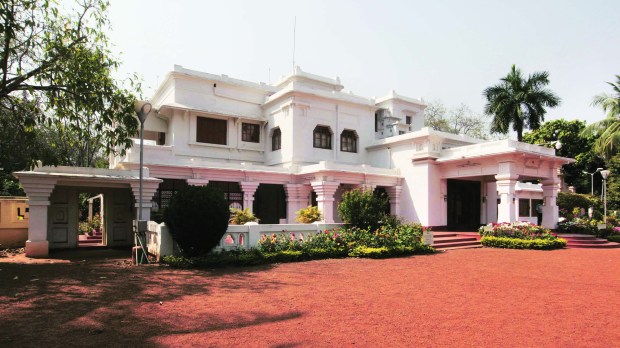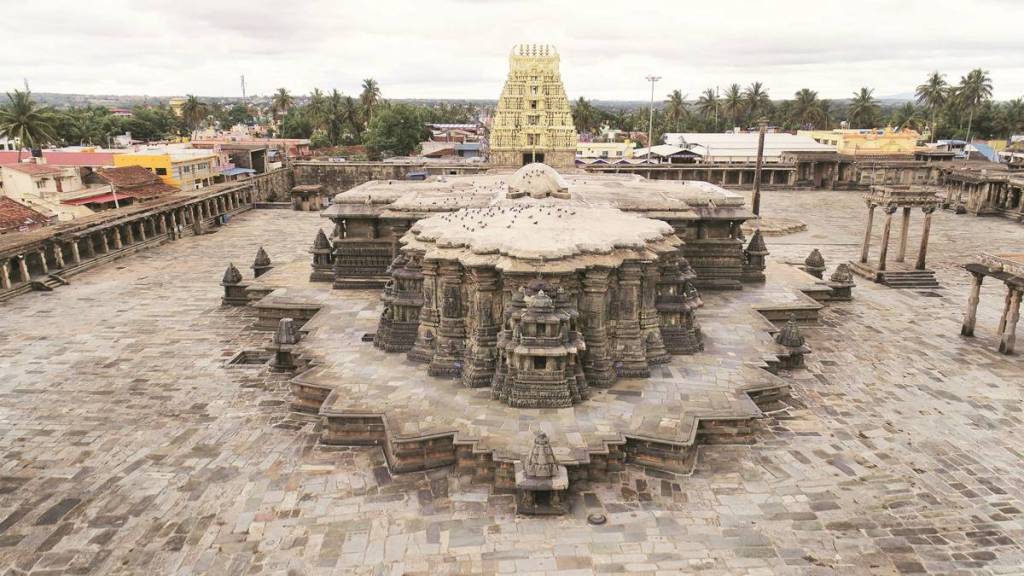On September 25 last year, the 45th session of the World Heritage Committee in Riyadh included Santiniketan in West Bengal and the 12th-century Hoysala Temples of Karnataka as India’s 41st and 42nd World Heritage Sites, respectively.
The subcontinent now has 34 cultural sites (man-made), seven natural sites (national parks, etc) and one mixed site (having traits of both), totaling 42.
But this number (42) falls far short of much smaller and historically younger countries such as Italy (59), Germany (52), France (52) and Spain (50). China, whose history is almost as old as India’s, has 57 World Heritage Sites.
According to Tim Curtis, director and representative, Unesco’s New Delhi regional office, there are a lot of tentative sites in India that may be added to the list in due course of time. “The process (to add a site to the list) is quite long,” Curtis tells FE. “The minimum time it takes is three years, but often is longer,” he adds.
Before a state party/country presents a site to the World Heritage Committee to be considered for listing, it needs to have in place the right management and protection plans of that particular site. Post that, it can present the file to the Unesco—parent body of the World Heritage Committee —and from there it takes 18-24 months for the site to be processed for evaluation. The final selection is done by a group of 21 state parties that are part of the World Heritage Committee (it’s a rotating list).
In total, there are 195 state parties that have ratified the World Heritage Convention, which guides the work of the World Heritage Committee.

In line for recognition
In addition to World Heritage Sites, there is a ‘Tentative List’ of properties that each state party intends to consider for nomination. “Parties are encouraged to submit their Tentative Lists—properties that they consider to be cultural and/or natural heritage of outstanding universal value and, therefore, suitable for inscription on the World Heritage List,” Curtis says, adding: “Nominations to the World Heritage List will not be considered unless the nominated property has already been included on the Tentative List.”
For instance, Santiniketan has been on the Tentative List since 2010, and the Hoysala Temples since 2014. The longer the Tentative List, the higher the chance of a country’s site getting added to the World Heritage List. “I am quite confident that India will have many more sites on the World Heritage List because its Tentative List is long,” Curtis says.
India has 50 sites on the Tentative List, including the Golden Temple in Amritsar, Mughal Gardens in Kashmir, Cellular Jail in the Andamans, and the Majuli river island in Assam. Only China (61) has a longer Tentative List. European countries with the most World Heritage Sites have a shorter Tentative List—France (33), Italy (31), Spain (30) and Germany (7).
Of outstanding universal value
To be added to the World Heritage List, a site needs to have ‘outstanding universal value’. Curtis says this implies that the site (its cultural or natural heritage) is a priceless and irreplaceable asset, not only of the nation, but of humanity.
Deterioration of the site of any of its parts constitutes an impoverishment of the heritage of all the people of the world,” he explains.
Possibly, that’s the reason a state party can nominate a site outside of its geographical boundaries, or a group can nominate a transnational serial property.
For instance, one of India’s 34 cultural sites—‘The Architectural Work of Le Corbusier, an Outstanding Contribution to the Modern Movement’—at the Chandigarh Capitol Complex was not nominated by India, but by a group of seven countries led by France. Selected in 2016, ‘The Architectural Work of Le Corbusier’ is composed of 17 sites spread over seven countries (France, Switzerland, Belgium, Germany, Argentina, India and Japan).
More sites, better heritage?
A country’s heritage shouldn’t be judged only by the number of sites, but also by quality. “Some countries have few sites, but these are incredible in terms of quality of conservation and safeguarding,” Curtis says. “The World Heritage List shouldn’t be a race for numbers,” he adds.
But the number of sites appears to be connected to a country’s development levels. Some historians FE talked to said that there is a connection between the two.
Giving the example of China, a Delhi-based historian told FE that as a country develops, it starts taking measures towards safeguarding its heritage, and that gets reflected in the number of sites it can submit for the Tentative List (because the ‘right management and protection plans’ of a site is a criterion for it to be considered for the Tentative List). “As India starts to take better care of its heritage and is able to convince the World Heritage Committee that it is indeed doing so, the latter will be more open for selection,” he says.
On why some European countries have disproportionately more sites – Europe, including Turkiye and Israel, has 518 sites of the total 1,199—he adds that the World Heritage Committee has had 45 sessions, of which 19 have been held in Europe and nine were hosted just by Paris. “Maybe there’s a bias,” he says, adding: “The Paris region itself has five to six sites.”
Hosting a session appears to impact the selection process. A standout example is the 1997 session in Naples, Italy, where 46 sites were inscribed, and of these 10 were in Italy. India has never hosted a session.
Delisted sites
Once on the list doesn’t mean always on the list. Of the total 1,199 World Heritage Sites, three have been delisted (deleted).
The first was the Arabian Oryx Sanctuary in Oman (selected in 1994 and deleted in 2007) because of Oman’s decision to reduce the size of the protected area by 90%—after oil was found at the site—and this step was seen by the World Heritage Committee as destroying the ‘outstanding universal value’ of the site. The second was the Dresden Elbe Valley in Germany—selected in 2004 and deleted in 2009, because Germany decided to build a four-lane bridge in the heart of the area.
The third was the Liverpool Maritime Mercantile City in the UK—selected in 2004 and deleted in 2021, because of the city’s decision to go ahead with the Liverpool Waters, a 30-year project that will completely transform the city’s docks, and possibly destroy the city’s historic centre and docklands.
Sites at risk
While no sites in India are at the risk of getting ‘deleted’, there are 56 properties across the globe that the World Heritage Committee has decided to include on the list of World Heritage in Danger. Of these, 23 are in Arab states and 14 in Africa – geopolitical conflicts and civil wars have risked sites in these regions.
Under the Ancient Monuments and Archaeological Sites and Remains (AMASR) (Amendment) Bill, the Indian government aims to ease rules on construction around protected monuments— currently, there is prohibition on construction up to 100 metres around these monuments. If passed, some of the 3,696 Centrally Protected Monuments guarded by the Archaeological Survey of India (ASI) will lose this protection, but none of the 42 World Heritage Sites or those on the Tentative List are expected to be touched by these changes.
Intangible heritage
Curtis said that the term ‘cultural heritage’ has changed considerably. “It doesn’t end at monuments or physical objects, but also includes traditions or living expressions inherited from our ancestors, such as performing arts, rituals, festivals, social practices, and so on,” he said.
So, in 2003, the Unesco held a Convention for the Safeguarding of the Intangible Cultural Heritage that proposed five broad ‘domains’ in which intangible cultural heritage is manifested—Oral traditions and expressions, including language as a vehicle of the intangible cultural heritage; performing arts; social practices, rituals and festive events; knowledge and practices concerning nature and the universe; and traditional craftsmanship.
Elements on the list of Intangible Cultural Heritage in India are Durga Puja in Kolkata, Kumbh Mela, Novruz, Yoga, traditional brass and copper craft of utensil making among the Thatheras of Jandiala Guru in Punjab, Sankirtana of Manipur, Buddhist chanting of Ladakh, Chhau dance of eastern India, Kalbelia of Rajasthan, Mudiyettu of Kerala, Ramman of Garhwal, Kutiyattam of Kerala, tradition of Vedic chanting, and Ramlila.









